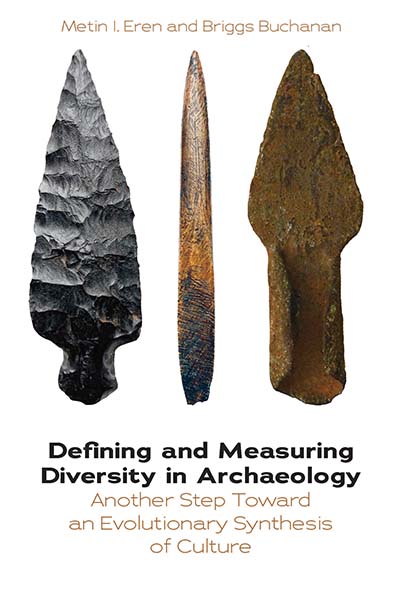
Email Newsletters
Sign up for our email newsletters to get customized updates on new Berghahn publications.
Defining and Measuring Diversity in Archaeology
Another Step Toward an Evolutionary Synthesis of Culture
Edited by Metin I. Eren and Briggs Buchanan
358 pages, 68 illus., color, index
ISBN 978-1-80073-429-6 $135.00/£104.00 / Hb / Published (August 2022)
eISBN 978-1-80073-430-2 eBook
Reviews
“I think it is an important volume for archaeologists to mine the work of all of these incredible researchers for a greater understanding of what diversity can tell us about within our assemblages and regions, and the chapters provide approaches for a diversity of archaeological materials that has something for almost any archaeologist no matter what their specialty or focus.” • Christopher Wolff, University at Albany
Description
Calculating the diversity of biological or cultural classes is a fundamental way of describing, analyzing, and understanding the world around us. Understanding archaeological diversity is key to understanding human culture in the past. Archaeologists have long experienced a tenuous relationship with statistics; however, the regular integration of diversity measures and concepts into archaeological practice is becoming increasingly important. This volume includes chapters that cover a wide range of archaeological applications of diversity measures. Featuring studies of archaeological diversity ranging from the data-driven to the theoretical, from the Paleolithic to the Historic periods, authors illustrate the range of data sets to which diversity measures can be applied, as well as offer new methods to examine archaeological diversity.
Metin I. Eren is an Associate Professor of Anthropology at Kent State University and a Research Associate at the Cleveland Museum of Natural History. He is Co-Director of the Kent State University Experimental Archaeology Laboratory and has conducted research in North America, Europe, Africa, and Asia. A master flintknapper, Eren knaps, uses, shoots, and breaks stone technologies from across the Stone Age to figure out how they work and to better understand technological evolution.
Briggs Buchanan is an Associate Professor of Anthropology at the University of Tulsa. He studies hunter-gatherers from the Pleistocene (specializing in the Paleoindian period of North America) to the ethnographic present. He uses theory and techniques from human evolution and ecology (such as cladistics, economic theory, scaling theory, and networks) to develop quantitative theory and mechanistic understandings of hunter-gatherer lifeways.
Subject: ArchaeologyAnthropology (General)Theory and Methodology
Contents
Download ToC (PDF)




